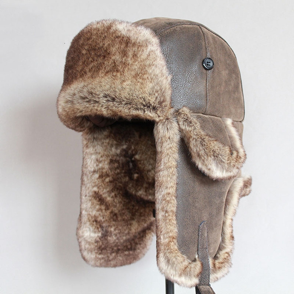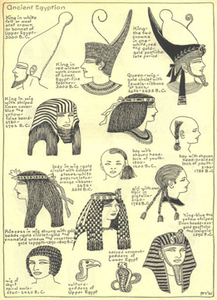When did hats become big-headed?
- CUFLBS
- Apr 18, 2021
- 3 min read
Updated: Apr 20, 2021
Hats! A practical, fashionable and even ceremonial item used daily across the world. The hat is a clear example of how fashion can transcend the aesthetic and delve into the social, political and cultural.

Hats were originally made from straw, wool felt and even animal skin as a form of protection from all sorts of weather conditions. Straw hats were most commonly used as protectors from the sun, whereas animal skin hats were used to shelter one’s head from the rain, wind and cold temperatures.
The earliest discovered hat can be dated back to around 3250 BC on the body of well-known Bronze Age Iceman, Ötzi, whose body was found frozen in the Alps between Austria and Italy. Ötzi was found wearing a bearskin cap with a chin strap on. His hat had clearly been made with the intention of keeping him warm.
Ötzi’s bearskin cap resembled what we now know as a Russian Ushanka earflap hat (pictured below).
Although hats were initially made for pragmatic reasons, such as protecting one’s head from harsh weather conditions, it was not long before they became a symbol of social or political status. In fact, one does not need to look much further from the Bronze Age to witness this transition.
In ancient Egypt, around 3000 BC headwear had already become an indicator of social status. Headdresses were often worn by the upper-class to keep them cool under the hot sun.
To ensure that lower classes would not be granted the same privilege, slaves were banned entirely from wearing hats in Ancient Rome and Greece until they were liberated from their masters.
This hat hierarchy brings to mind the way in which headpieces denote one’s rank or regiment in the military.

Things are a little different nowadays!
Although headwear continues to thrive at events such as Royal Ascot where the dress code is centred around hats, it appears as though the contemporary leeway for self-expression has resulted in all sorts of atrocious headpiece creations that the Edwardians would have only had nightmares about.

Beauty truly is in the eye of the beholder!
So when did the hat become political?
Slaves’ liberations from their owners were marked by an accessory: a simple skull like cap known as the Pileus. This mushroom-shaped hat would visually mark their freedom so that it became known that they were now citizens able to vote and no longer slaves.
These hats’ association with liberty carried on into the eighteenth century in the establishment of the Phrygian cap which became a symbol of revolutionary France and America.
The Parisian working class’ revolutionary fervour and solidarity were made easily distinguishable by the ‘bonnet rouge sans-culottes’ (red bonnet without silk breeches).

To this day since the French Revolution, the national allegory of the French Republic has been a woman named Marianne who wears a red Phrygian cap.

Similarly, since 1778 the United States Army has used a "War Office Seal" in which the motto "This We'll Defend" is displayed directly over a Phrygian cap on an upturned sword. It also appears on the state flags of West Virginia and Idaho (as part of their official seals), New Jersey, and New York, as well as the official seal of the United States Senate, the state of Iowa, the state of North Carolina and on the reverse side of the Seal of Virginia.

Latin American anti-colonial revolutions were inspired by slogans of the American and French Revolutions. An influence exhibited by the Phrygian cap appearing on many, if not most of, Latin American nations’ coat of arms: Haiti, Argentina, Colombia, Bolivia, Cuba, El Salvador, Nicaragua and Paraguay.

It was not long ago that a modern take of this red cap was seen in the infamous Donald Trump’s MAGA: ’Make America Great Again’, baseball cap!
The longstanding relationship between fashion and politics epitomises the self-expression that fashion gives way to!
So, what have you worn that was political?
Giacinta McNaught-Davis
Industry Trends Director
Cambridge University Fashion & Luxury Business Society








Comments